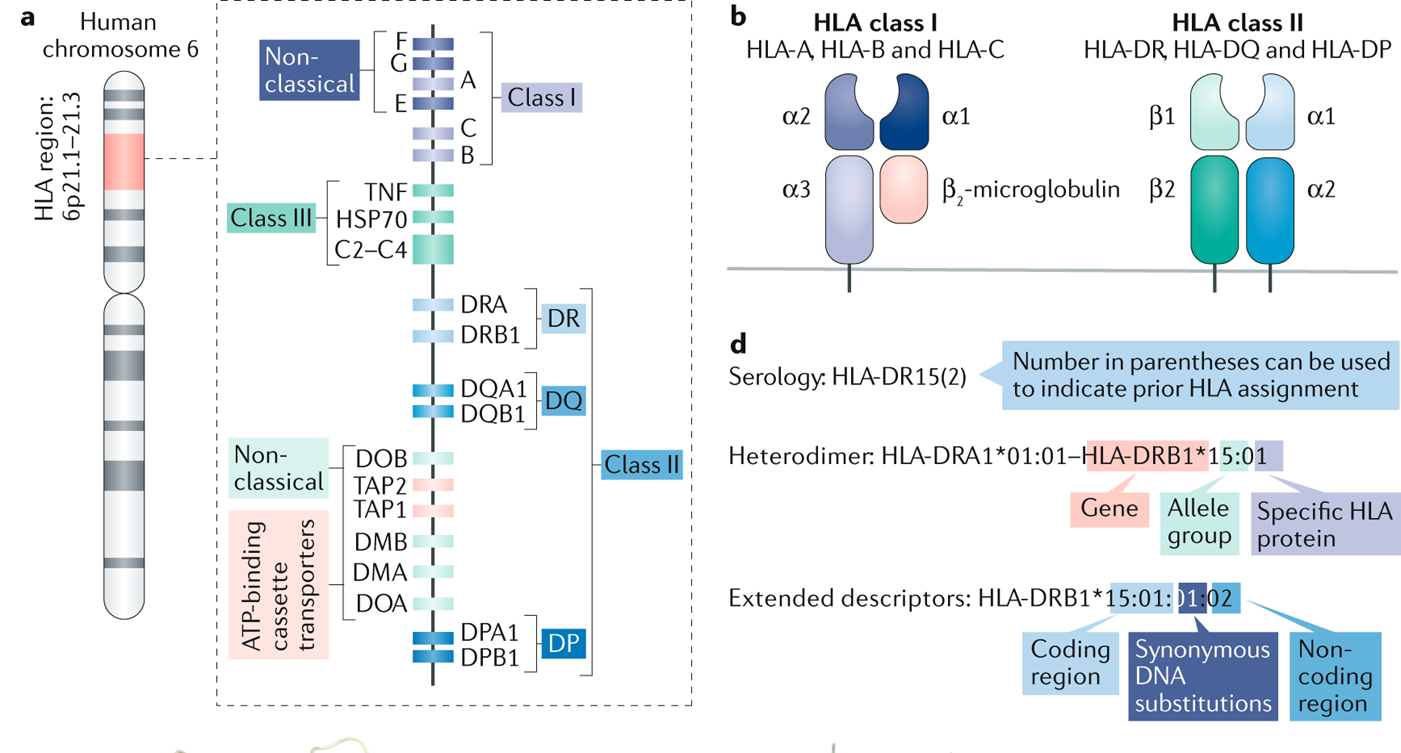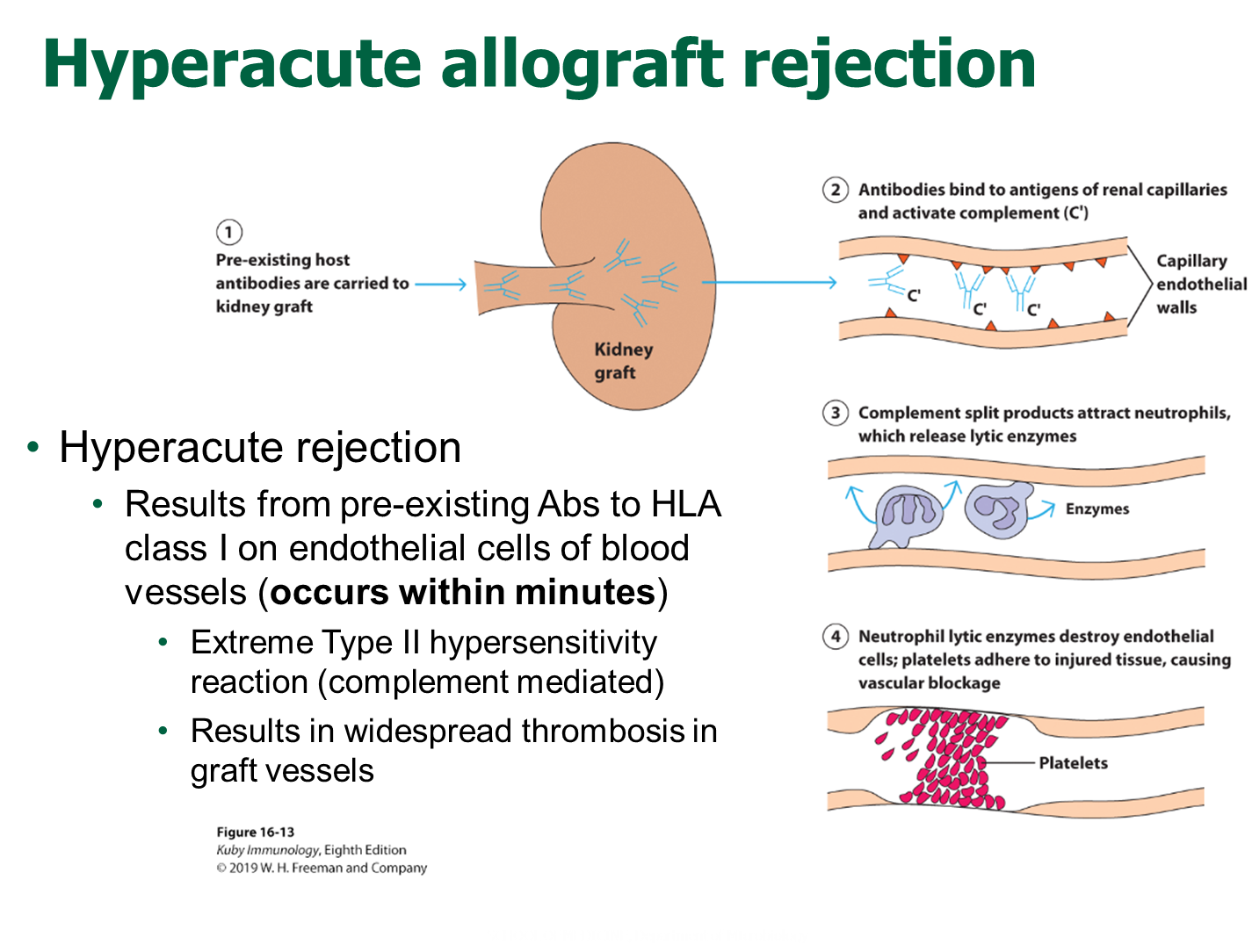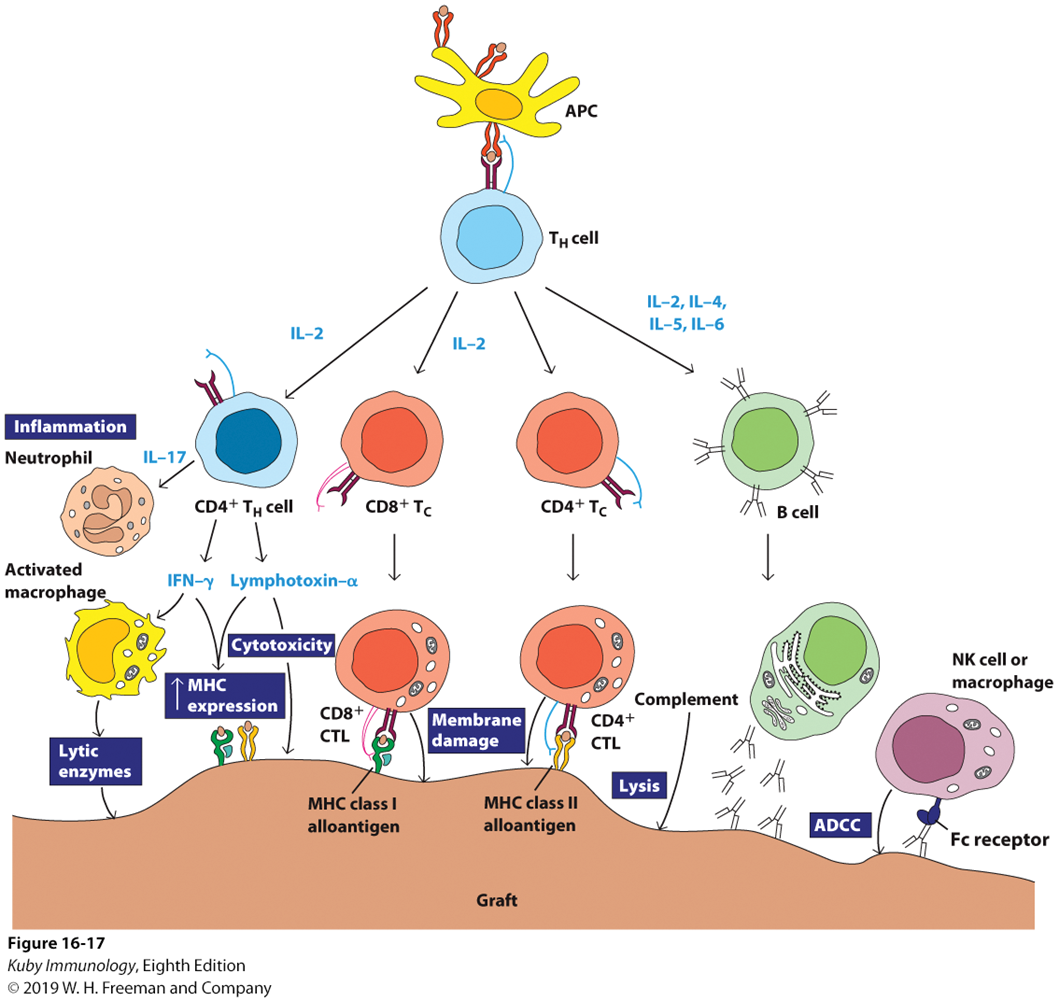Transplantation Immunology
1/8
There's no tags or description
Looks like no tags are added yet.
Name | Mastery | Learn | Test | Matching | Spaced |
|---|
No study sessions yet.
9 Terms
What is an Allograft?
Transfer of tissue between 2 genetically distinct individuals
How do MHC molecules contribute to graft rejection? What are the two kinds of MHC molecules?
MHC molecules or HLA molecules are responsible for the acute immune response that progress to graft rejection
1) This is caused by significant genetic variability in MHC molecules and their complex structure
→ although they are similar in structure, they are recognized as foreign if introduced to another human
There are two kinds of MHC molecules
→ Class I MHC - expressed on all cells and present peptides to T-cell receptors on CD8 positive T-cells
→ Class II MHC - expressed on antigen presenting cells which present peptides to CD4+ T-cells
→ CD8 and CD4 co-receptors will stabilize the MHC T-cell interaction as well as the interactions of the presented peptide
What does it mean that MHC Genes are polygenic

MHC/HLA genes are polygenic, meaning there are multiple genes (three genes) producing three different MHC molecules that all do the same function but vary slightly
1) HLA Class I are produced by three genes that produce HLA-A, B, C which are structurally similar in the alpha chain but differ slightly at the binding group
→ created by a single chain
2) HLA Class II are produced by three genes that produce HLA-DQ HLA-DR, and HLA DP which are structurally similar in the alpha chain but differ slightly at the beta chain
→ created by an alpha and beta chain
What does it mean that MHC genes are polymorphic? How are the binding grooves of MHC classes different
MHC Molecules have variability in the amino acids of the binding groove, changing the kind of peptides that can bind within the binding grooves (polymorphisms)
1) MHC Class I are composed of only an alpha chain which will make a deeper and closed off binding groove which limits the size of the peptide
2) MHC Class II Molecules are composed of an alpha and beta chain creating a binding groove similar to a hot dog bun. Creates a binding groove that allows for peptides to have a greater variability
Why are HLA Genes Codominant?
HLA genes are codominant in order to present a diverse array of peptides and create a wide variety of HLA molecules
→ the HLA genes we inherit from mom and dad (haplotype) are equally expressed, allowing for increased variety of HLA molecules expressed
How do we assess histocompatability?
Cross Matching
1) some patients can already have antibodies against HLA molecules due to blood transfusions, pregnancies, or other procedures that can attack donor HLA molecules
→ these antibodies will drive rapid rejection known as hyperacute rejection
2) Cross matching allows us to check for this issue by mixing recipient serum with lymphocytes from the donor
→ if recipient has antibodies against MHC molecules the donor molecules, there will be positive crossmatch leading to fluorescence
→ a positive cross match means that you cannot receive a transplant from that donor
What is Hyperacute Rejection?

Hyperacute Rejection occurs within minutes or immediately of transplantation
→ occurs due to pre-existing antibodies to HLA Class I on endothelial cells of the blood vessels
→ this is considered a type II hypersensitivity reaction which is complement mediated reaction via antibodies
→ results in widespread thrombosis in the graft vessels
What is Acute Allograft Rejection

Acute rejection occurs as a result of direct allorecognition, where donor MHC molecules presenting to host T-cells are recognized as foreign. This reaction occurs within weeks to months
1) CD8 T-cells in the recipient will respond to donor MHC molecules, triggering direct lysis and leading to secretion of proinflammatory cytokines
2) CD4 T-cells responding to donor MHC molecules will secrete cytokines as well as activating B-cells, leading to antibody secretion and further inflammation
What is Chronic Allograft Rejection

Graft rejection that occurs months to years after transplantation and has significant remodeling of vasculature leading to arteriosclerosis
1) Following an acute rejection of the tissue, debris from the donor tissue will be picked up by recipient APC which will then be presented
→ this presentation of donor tissue (indirect allograft rejection) leads to T-cell activation which will attack donor tissue
→ T-cells activated will further activate B-cells leading to increased anti-donor antibodies against MHC and donor antigens